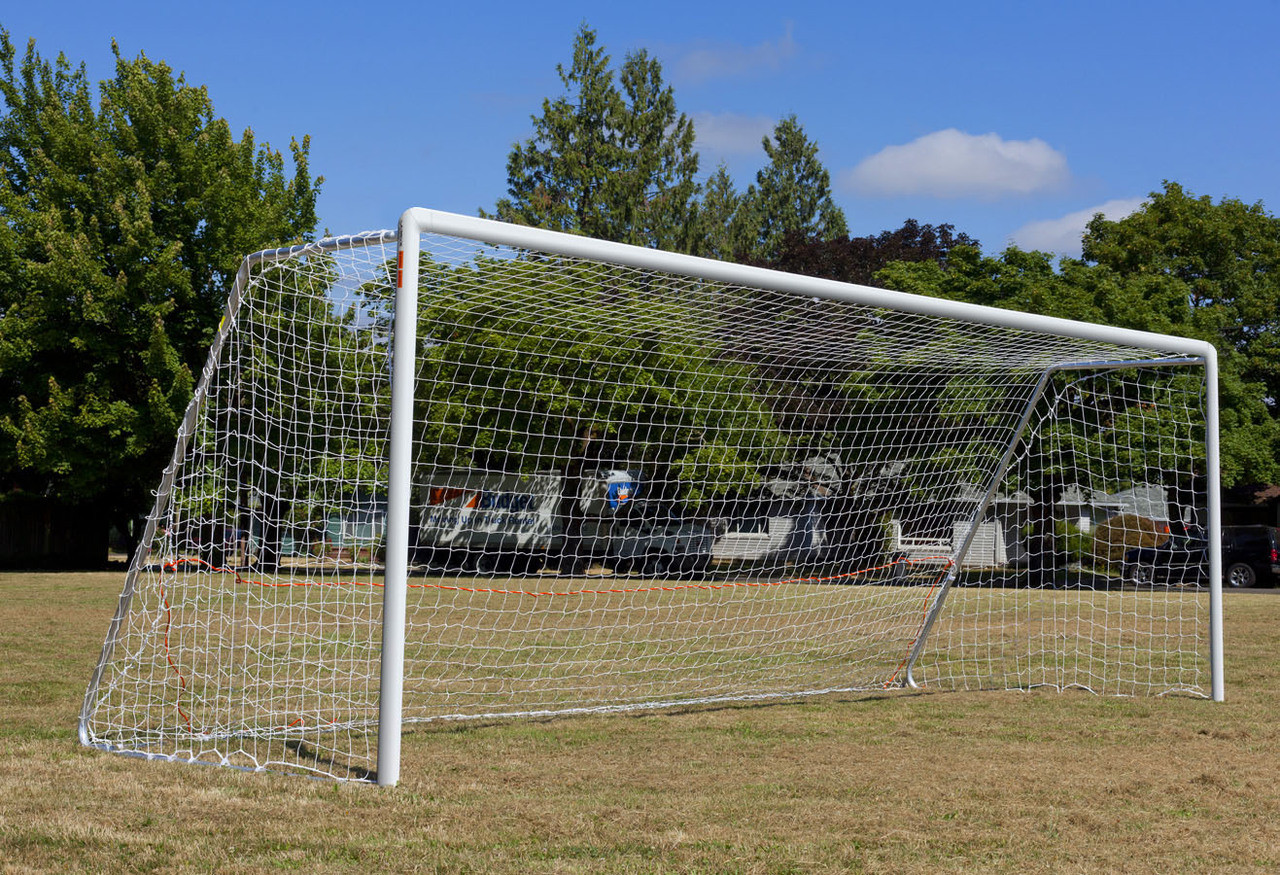Size Of A Regulation Soccer Goal
Soccer is a beloved sport that captivates millions of fans around the world. Whether you're a player or a spectator, one essential element that defines the game is the size of the regulation soccer goal. The dimensions of a soccer goal play a significant role in determining the outcome of a match. In this article, we will delve into the details of a regulation soccer goal, exploring its size, importance, and frequently asked questions.
The Size of a Regulation Soccer Goal
The size of a regulation soccer goal is standardized to ensure fairness and consistency across all levels of play. According to the regulations set by the International Football Association Board (IFAB), the dimensions of a standard soccer goal are as follows:

Width: The opening width of a regulation soccer goal is 8 yards (7.32 meters).
Height: The height of a standard soccer goal is 8 feet (2.44 meters).
Depth: The depth of a regulation soccer goal is 3 feet (0.91 meters).
These dimensions apply to both professional and amateur matches around the world. The standardized measurements ensure that players have a consistent target to aim for, making the sport more enjoyable and fair.
The Importance of Regulation Soccer Goal Size
The size of a regulation soccer goal is not arbitrary; it serves multiple purposes that contribute to the overall gameplay and fairness of the sport. Here are a few reasons why the size of a soccer goal is crucial:
1. Fairness
A standard-sized goal ensures fairness between teams, regardless of their skill levels. When everyone competes with the same dimensions, it eliminates any advantages or disadvantages that might arise from uneven goal sizes.
2. Challenge
The dimensions of a regulation soccer goal present a challenging target for players. The combination of width and height requires precise shots and accurate ball control, enhancing the technical aspects of the game. It also adds excitement and suspense for spectators as they witness players attempting to score within those defined dimensions.
3. Consistent Skill Development
Standardized goal dimensions facilitate consistent skill development in players. Whether aspiring professionals or recreational enthusiasts, the goals they practice with will consistently match the dimensions they encounter in competitive matches.
FAQs About Soccer Goal Dimensions
Q: Are regulation soccer goals the same size for all ages?

A: No, the size of soccer goals may vary based on age groups. Typically, youth soccer goals are smaller than full-size regulation goals, allowing young players to adjust to the dimensions gradually. However, once players transition to adult-level soccer, they will compete with the standard-sized goals mentioned earlier.
Q: Can the dimensions of a regulation soccer goal ever change?
A: While the core dimensions of a regulation soccer goal remain the same, there can be slight variations in the overall design. For example, the material used for the goal frame can differ, ranging from aluminum to steel. Additionally, the structure and attachment mechanisms may vary, but these changes do not affect the overall size of the goal.
Q: Are the goal dimensions the same for indoor soccer?
A: No, indoor soccer often has smaller goal dimensions compared to outdoor soccer. The reduced playing area necessitates smaller goals, which can vary based on the specific indoor soccer league or facility.
Top 3 Most Memorable Goals in Soccer History
Alongside understanding the importance and dimensions of regulation soccer goals, it's worth reflecting on some of the most unforgettable goals in the history of the sport.
1. Diego Maradona - "The Hand of God"
During the 1986 FIFA World Cup quarterfinals, Diego Maradona scored an infamous goal against England. With his hand, Maradona punched the ball into the net, leading to Argentina's victory. This goal remains one of the most controversial moments in soccer history.
2. Lionel Messi - Solo Goal Against Getafe
In a Copa del Rey match in 2007, Lionel Messi showcased his incredible skill by dribbling past several defenders on his way to scoring a stunning goal. This solo effort is often regarded as one of the greatest goals ever scored.
3. Zinedine Zidane - Champions League Final Bicycle Kick
In the 2002 UEFA Champions League Final, Zinedine Zidane stunned the world with an extraordinary bicycle kick goal. With his back to the goal, Zidane executed a perfectly timed overhead kick, securing the victory for Real Madrid.
Conclusion
The size of a regulation soccer goal serves as a vital component of the beautiful game. By adhering to standardized dimensions, players, coaches, and spectators can enjoy fair and consistent matches worldwide. Whether you're watching or playing, the goals on the field carry a unique significance and contribute to the excitement that soccer brings to our lives.
Disclaimer: The data provided in this article is for informational purposes only and does not constitute professional advice. The content format and language used in this article are intended to be friendly and engaging for readers.
Size Of A Regulation Soccer Net | LIVESTRONG.COM
 Image Source : www.livestrong.com
Image Source : www.livestrong.com size
*Discounted Less Than Perfect* Special Coated 21' X 7' Soccer Goal, One
 Image Source : www.g3elite.net
Image Source : www.g3elite.net regulation soccer goal youth
Youth Soccer Boot Camp
 Image Source : youthsoccerbootcamp.blogspot.com
Image Source : youthsoccerbootcamp.blogspot.com soccer goal size dimensions regulation build
From Amateur To Pro – How The Size Of A Soccer Goal Impacts The Game
 Image Source : clubleonen.com
Image Source : clubleonen.com Regulation Soccer Goal Aluminum-Official Size By Stackhouse - Head
 Image Source : headcoachsports.com
Image Source : headcoachsports.com regulation stackhouse
Official Portable Soccer Goal
regulation decades fabricated sgr
Soccer Goal Dimensions
 Image Source : www.slideshare.net
Image Source : www.slideshare.net goal soccer dimensions slideshare
Ukuran Panjang Gawang Sepak Bola Adalah - House MY B
 Image Source : housemyb.pops.my.id
Image Source : housemyb.pops.my.id Youth soccer boot camp. From amateur to pro – how the size of a soccer goal impacts the game. Regulation stackhouse. Ukuran panjang gawang sepak bola adalah. Goal soccer dimensions slideshare